Kyoto is a city where tradition and culture are inherited, and innovation continues to be brought on top of it. While weaving our thoughts
" THE BLOSSOM KYOTO" was born.
Reservations

SearchSearch for your stay date
*Please specify the number of people per room.

Kyoto is a city where tradition and culture are inherited, and innovation continues to be brought on top of it. While weaving our thoughts
" THE BLOSSOM KYOTO" was born.
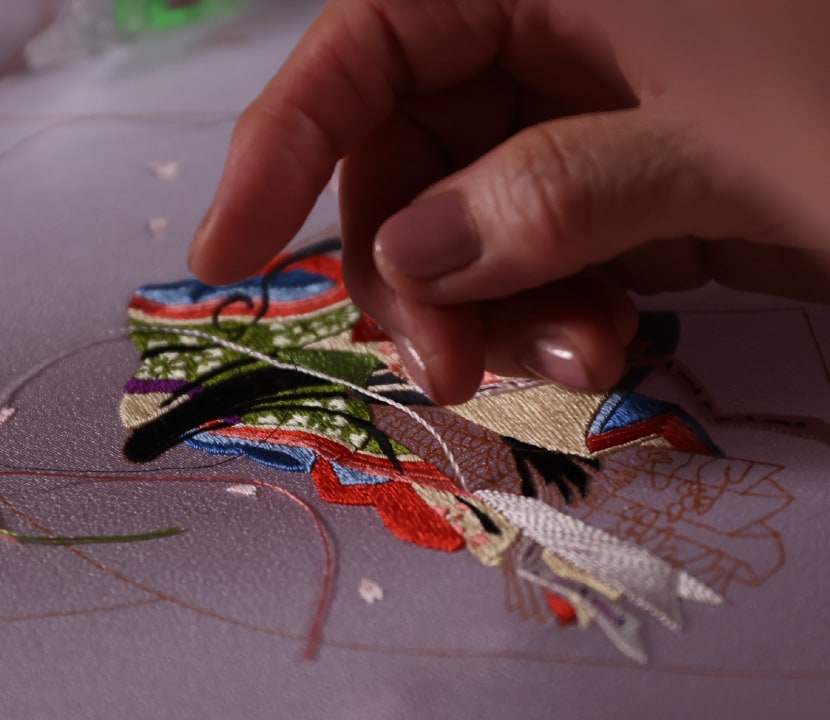
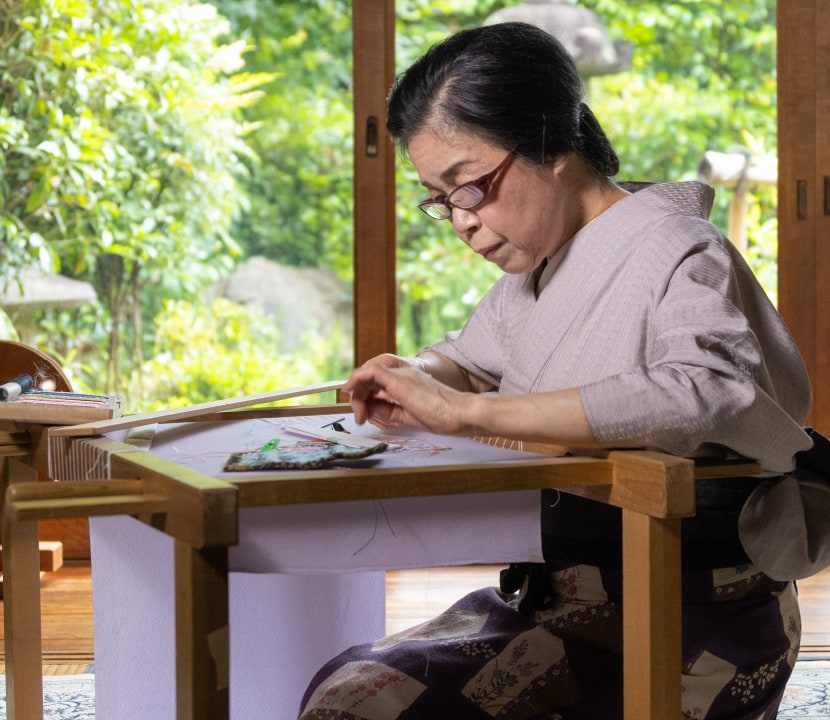
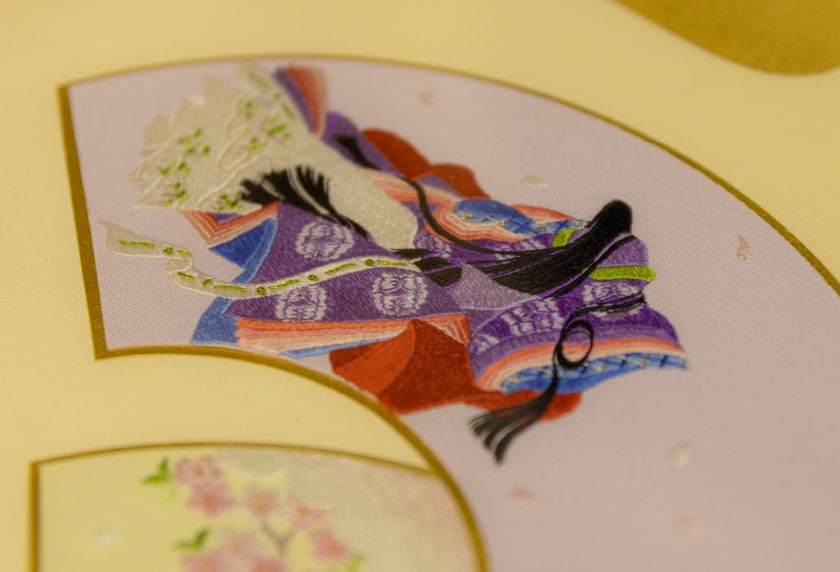
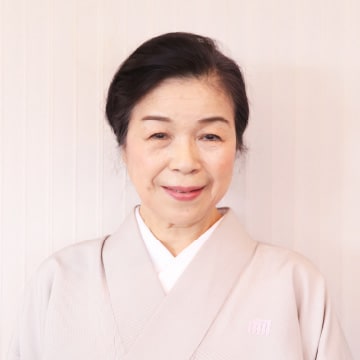
Born in Nishijin, Kyoto. In 1969, after marrying embroidery artist Toshiaki Nagakusa, she studied Kyo-nui. 2002 Kyo-nui Gallery Kiryo-kan opened. In 2010, Kiryo-kan was relocated and opened as a Kiryo-an, where Japanese décor and Kyo-nui works were exhibited. In 2011, he received the Kimono Culture Award (sponsored by the Association for the Promotion of Folk Costume Culture). In 2014, he held numerous solo exhibitions, including the 2014 Kyo-nui Teacher, Sumie Nagakusa Dynasty Flower and Bird Fugetsu Exhibition (Arashiyama, Kyoto, Ogura Hyakunin Ichishu Hall of Fame, Tokiuden), and the 21st Century Art Borderless Exhibition 2016 (Maruzen Marunouchi Main Store, Tokyo).



Kyo-nui is a delicate and elegant embroidery that reflects the elegant culture unique to Kyoto, and is designated as a traditional craft of the country. The framed painting of the guest lounge exhibition was created by her husband, Mr. Toshiaki Nagakusa, and Mr. Sumie Nagakusa, who runs the Kyo-nui gallery "Kiryo-an" with her husband, Mr. Nagakusa nui-koubou.
"While accepting the importance and difficulty of inheriting technology, I am expressing a world that is different from the creation of my master. That's why I'm working on the production with the feeling of 'lifelong Otome.'"
This is exactly the kind of work that expresses the world of Otome. Along with the elegant appearance of a princess from the dynasty, flowers that convey the four seasons of Kyoto are depicted, and the design is full of kindness in gorgeousness.
" Kyo-nui uses silk thread and changes the thickness depending on how it is twisted, but this adjustment takes a lot of nerves. It's an expression of superimposing technology, so I hope you can see the fun of it."
If you look closely, you can feel the thickness of the embroidery, and you can feel that this beauty was born from the accumulation of meticulous work that took a daunting amount of time, one piercing embroidery. It is also characterized by the use of a variety of colors, and the colors used in the Nagakusa nui-koubou are said to be close to 8,000. The threads, techniques, and color schemes are all carefully considered, and a one-of-a-kind work is created by vivid handwork. It is full of richness for the amount of time that has been piled up, and it fascinates the viewer.
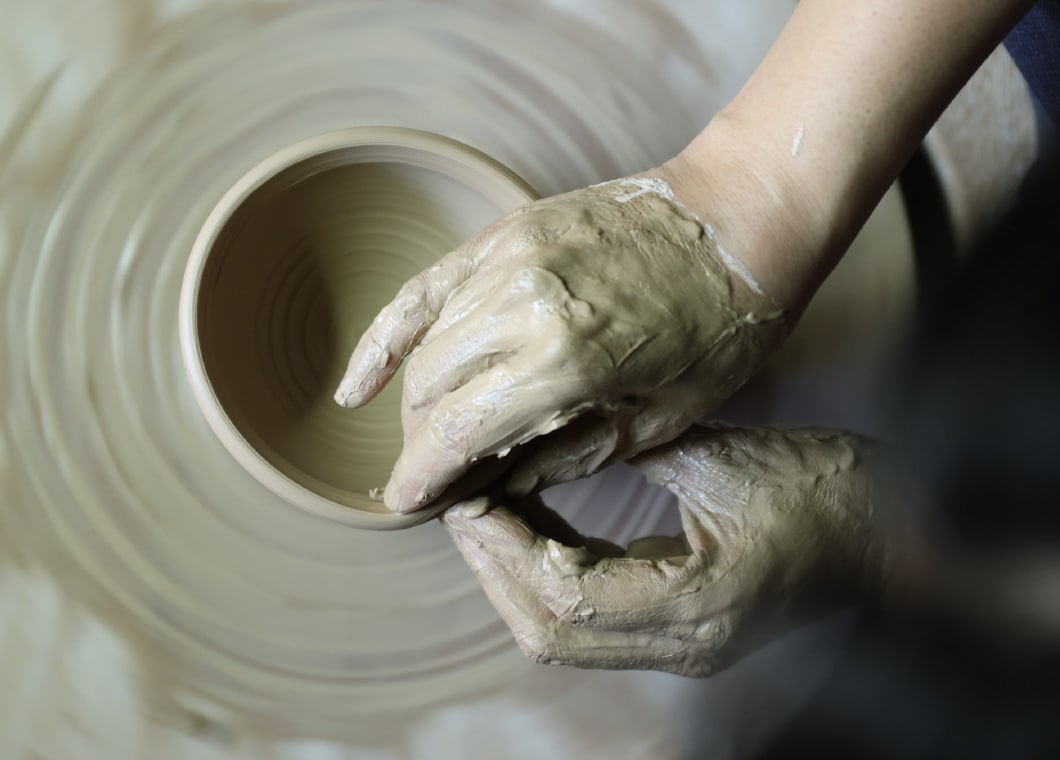
"For the exhibited works, I worked on them using a technique called 'Nerikomi,' which I have been working on for about 15 years.
Sozan-gama Sozan Suwa said. Born as the third daughter of a venerable manufacturing family, her father is the third generation Sozan Suwa and her mother is the twelfth generation Soutetsu Nakamura (a painter of 100 families), and she has inherited the skills of the Suwa family, which specializes in celadon, and has developed a unique style by adding a modern sensibility to the refreshing and beautiful pale color and feminine neat form.
" Nerikomi" is a technique that requires more time and effort than general celadon. In addition, we have incorporated the process of adding color to it.
"This color pattern is naturally created by grinding the fabric on a potter's wheel and mixing it, and it is something that cannot be created intentionally.
In the refreshing blue of the sky, the fluttering pink is reminiscent of the color of the sunset, and the pale yellow is reminiscent of the dawn of the eastern nome. The permanent world of the universe is also felt there, and a calm scenery is cast into the mental image of each viewer.
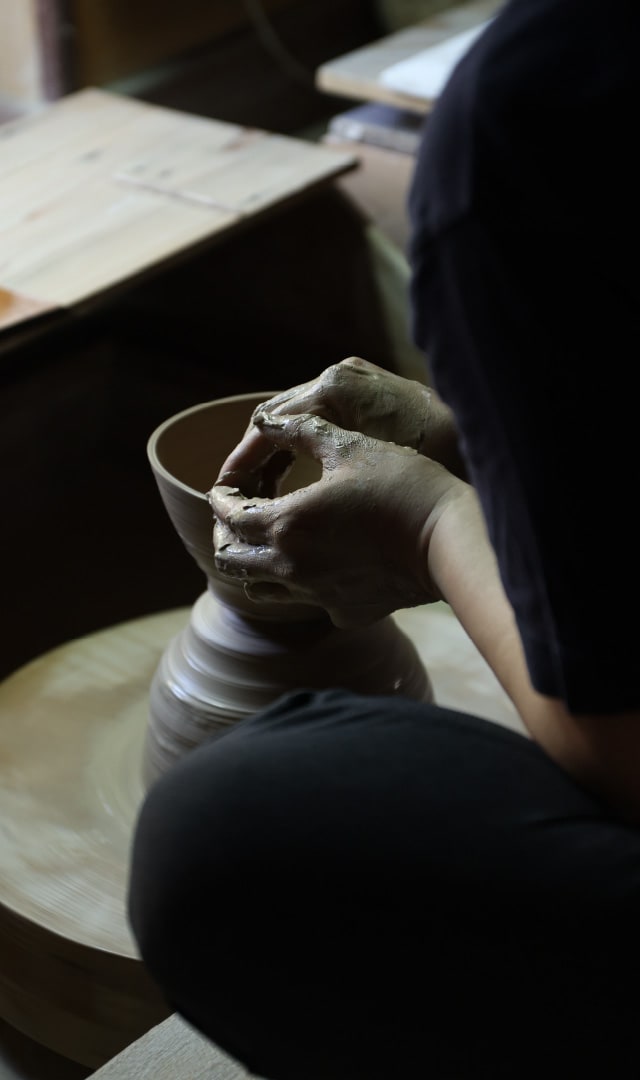
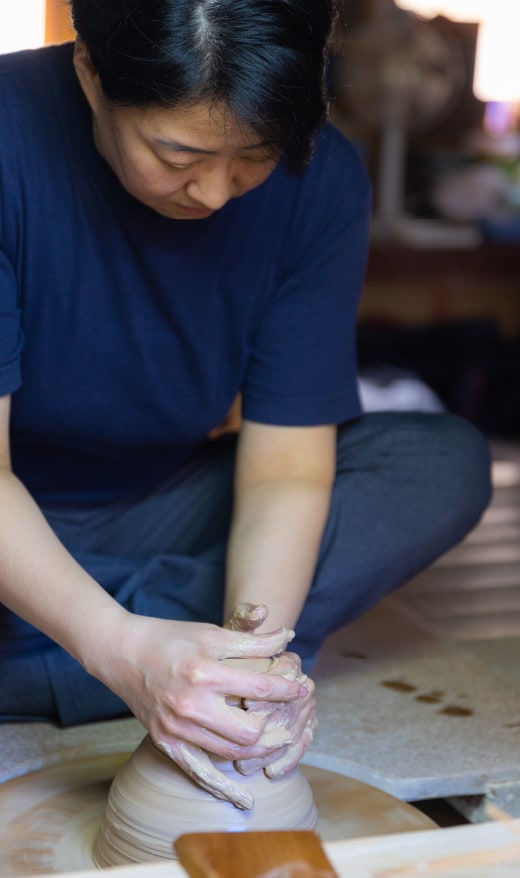
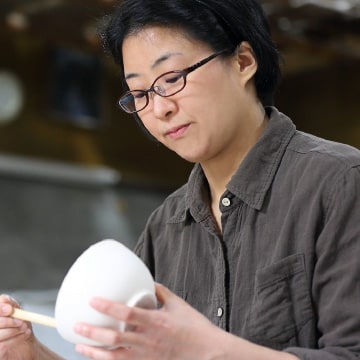
Photo: Daido Yukiyo
Born in Kyoto City as the third daughter of her father, Sozan Suwa, and mother, Soutetsu Nakamura, the twelfth generation. In 1992, she graduated from Cheng'an Women's Junior College, Department of Art and Design, Graphic Design Course, Department of Moving Image. 1996 Graduated from the Department of Molding and Graduate School of Ceramics and Technology of Kyoto Prefectural College of Ceramics. 1997 Completed the Kyoto City Traditional Industrial Engineer Training Ceramics Course. Together with his father, he began making ceramics. Exhibited at Soutetsu Nakamura exhibitions in various places and participated in Tetsukobo. In 2002, the fourth generation of Sozan Suwa was attacked. Currently, Sozan Suwa exhibitions are held in various places.

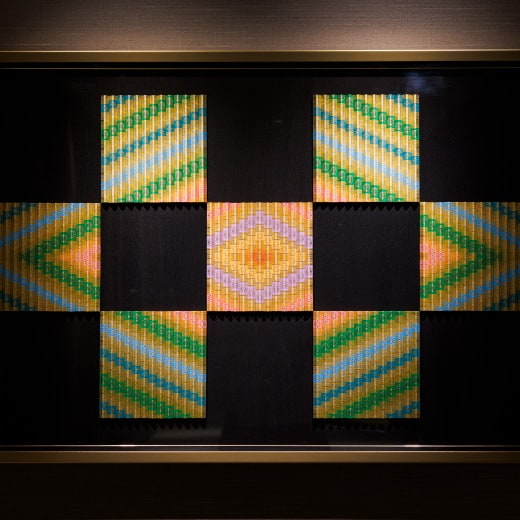
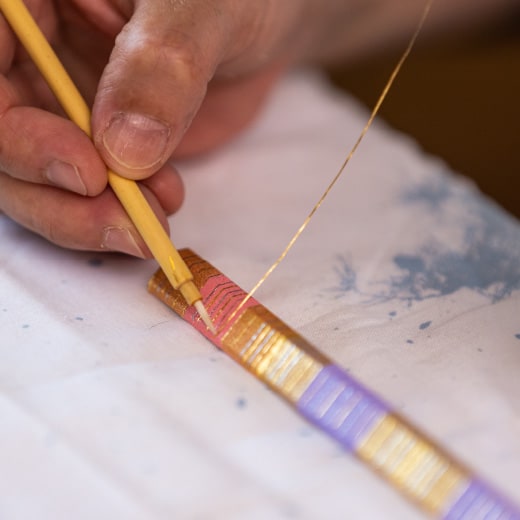
Kirikane is a technique of crafting with pure gold or platinum foil, and was originally used as a decoration for Buddha statues and paintings, and has developed.
"In addition to the meticulousness of the technique itself, which involves cutting and pasting gold leaf into thin strips, it is also difficult to think about the overall balance and composition, so I am focusing on that as well. He composed the work with the motif of "BLOSSOM" in the name of the hotel.
"The motif is a small flower, but it expresses a world that expands widely."
Each part is three-dimensionally shaped, and the way it shines differs depending on how the light hits it. Please take a look at it from a different angle and admire the world of craftsmanship in detail.
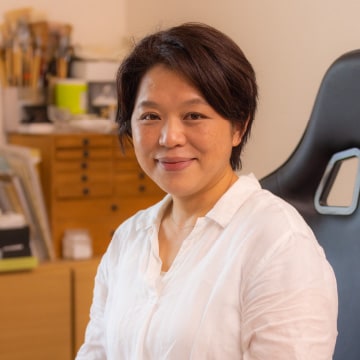
Born in Kyoto as the eldest daughter of Buddhist master Koukei Eri and Sayoko Eri, holder of the Important Intangible Cultural Property "Kirikane". After graduating from Kyoto College of the Arts (now Kyoto Zokei University) Japan in 1991 with a major in painting, she studied with her mother. In 2001, she moved to her husband's hometown of Fukuoka and started working in Kyoto and Fukuoka. In 2011, at the 58th Japan Traditional Crafts Exhibition, the Kirikane decorative box "Koka" won the Japan Crafts Association Newcomer Award. In 2019, he won the Asahi Shimbun Grand Prize at the Western Traditional Crafts Exhibition. In 2020, he received the Encouragement Prize of the Kyoto Prefectural Culture Prize.
https://kirikane.net/
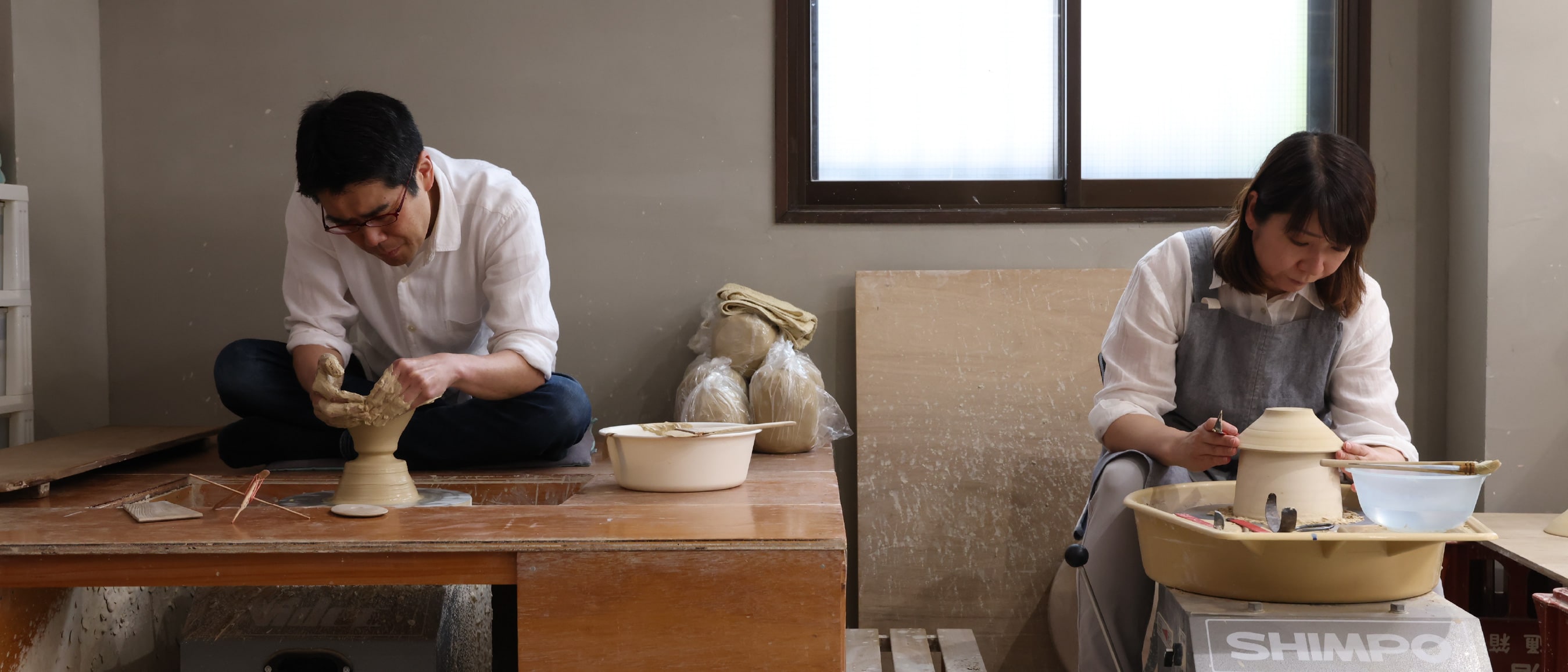
"Soryu- gama" is a kiln founded by Mr. and Mrs. Soryu Wakunami and Mr. and Mrs. Madoka, and Mr. Su Ling is the fourth generation to inherit the name of Kyo-yaki seiji Soryu Wakunami. Madoka is the third daughter of the famous kiln "Marudai pottery studio" that has been in Fukuoka and Koishiwara-yaki for 14 generations. Their creativity merged to create Seiji-tobikanna. In our premium twin rooms, we have cups and saucers made by the two of you. "We are proposing vessels that suit today's lifestyles by incorporating a folk art technique called tobikanna, which is a Koishiwara-yaki technique, into celadon using the nerikomi-seiji technique," says Mr. Su Ling. "tobikanna is a technique of carving geometric continuous patterns while rotating a potter's wheel using a tool made from an old clock spring tobikanna.
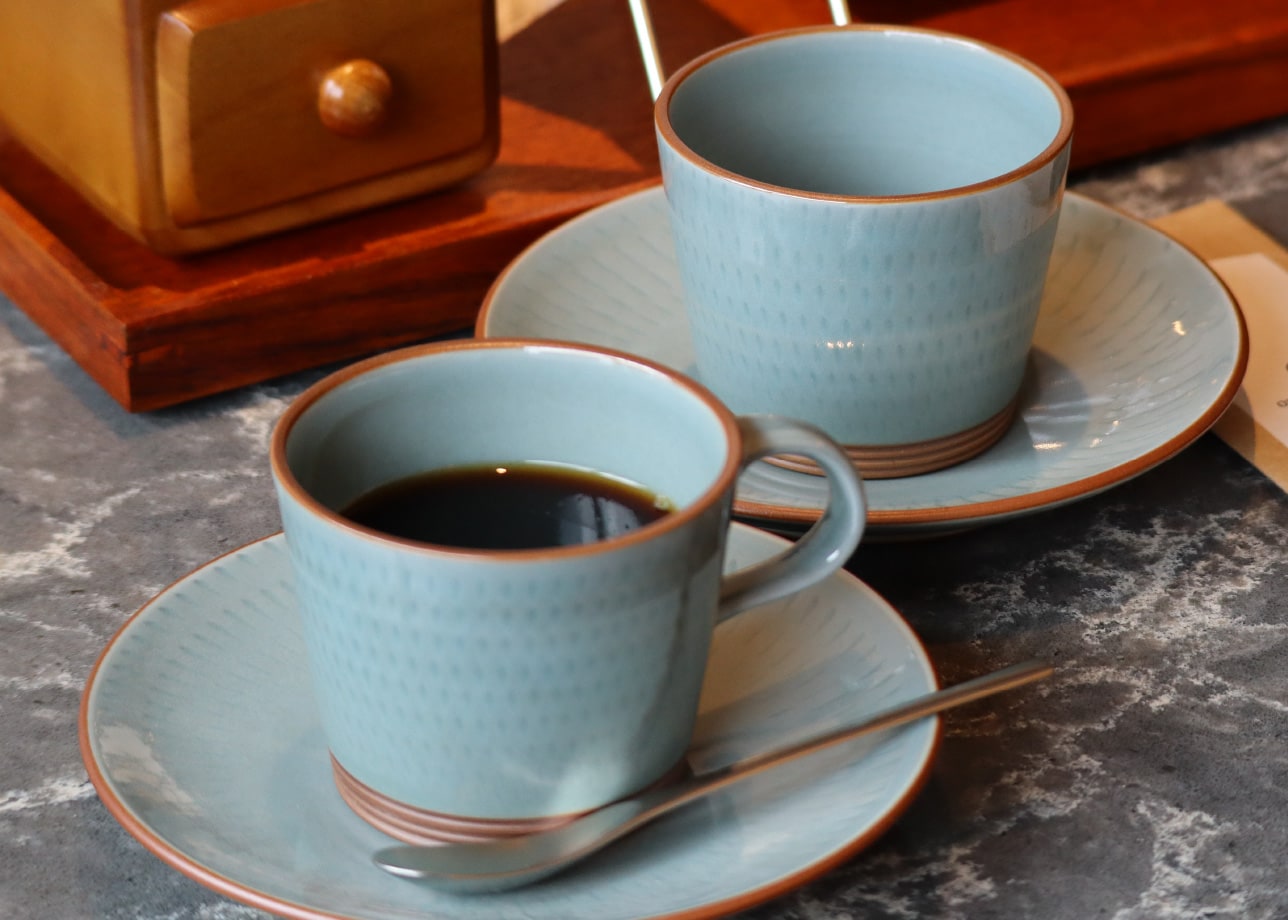
Mr. Su Ling says that the blue celadon made by his grandfather, the first generation, is ideal, and it is pursued every day. Since ancient times, celadon has been said to be the ideal color of "uka-tensei", and it is the clear uka-tensei blue of "the sky after the rain stops".
In addition, we also offer an optional tour of the pottery making experience at the "Soryu- gama" workshop & gallery for hotel guests (advance registration required). We hope you will enjoy the unique taste of a hotel located near the birthplace of Kiyomizu-yaki.
THE BLOSSOM KYOTO offers accommodation plans that include hand-twisted pottery experience in Soryu- gama. Why don't you make your own Kiyomizu-yaki with the traditional technique "tobikanna"?
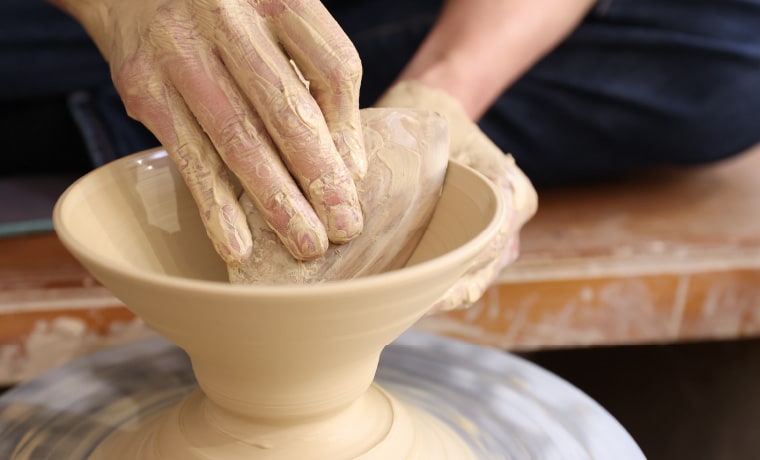
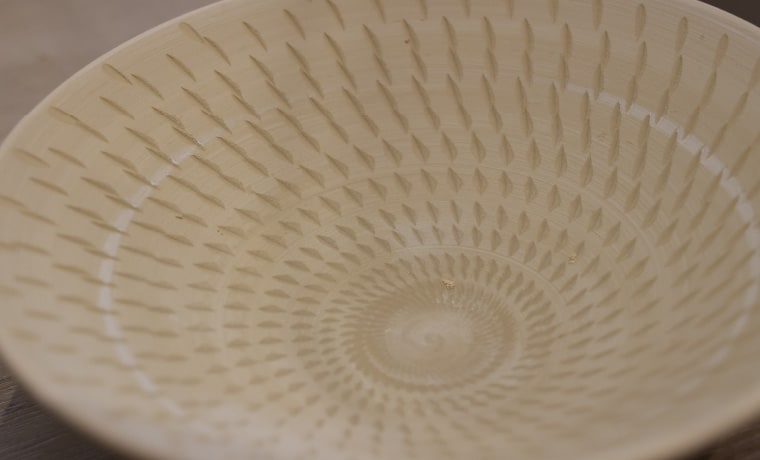
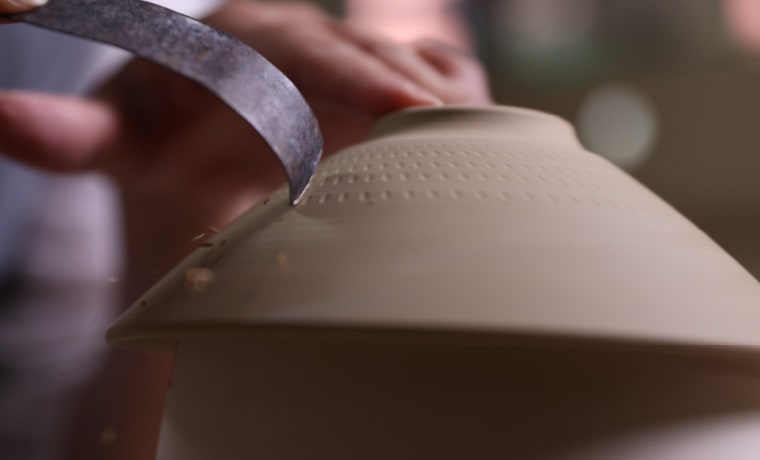
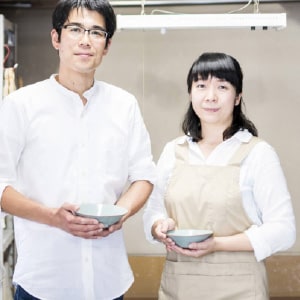
The first Soryu Wakunami was trained by the first Sozan Suwa, a leading Kyo-yaki seiji who was active in the Meiji and Taisho periods. Since then, the Wakuba family has continued to preserve traditional techniques and make ceramics in the land of Shimizu in Kyoto for four generations, and on the occasion of her marriage to Madoka, the third daughter of a potter in Fukuoka and Koishiwara-yaki, she fused two techniques from different pottery areas. In 2015, he launched "Soryu- gama", and in pursuit of a new expression of blue gourd, he and his wife are heading to the potter's wheel every day to create a vessel that is loved by many people.
https://soryu-gama.com/
THE BLOSSOM KYOTO offers accommodation plans that include hand-twisted pottery experience in Soryu- gama. Why don't you make your own Kiyomizu-yaki with the traditional technique "tobikanna"?
Kyoto is also known for its many famous coffee shops. In the rooms of the hotel's "Deluxe Twin", "Deluxe Force" and "Premium Twin", you can enjoy coffee from the featured blended coffee specialty store "blend kyoto".
"As a blended coffee specialty store, we operate near the Kyoto Imperial Palace, and at the store, we ask customers about the taste of their favorite coffee, select one of their favorite coffee beans, and offer a blend using that bean."
Mr. Daiki Okui said. At the counter of the room, you will find 20 grams of individually wrapped beans blended by Mr. Okui. We are particular about the tools we brew. Hand grinder, coffee dripper and jug, digital scale to measure the amount of hot water per throw, and Kiyomizu-yaki & Soryu- gama cup and saucer (Premium Twin only). Each one of them is beautiful, and you can enjoy the time of brewing coffee slowly.

In THE BLOSSOM KYOTO 's "Deluxe Twin", "Deluxe Force Wa -NAGOMI-" and "Premium Twin" rooms, you can enjoy THE BLOSSOM KYOTO 's original blended coffee produced by blend kyoto according to the season. Please enjoy the fruity taste unique to shallow roasting, which has a different expression from deep-roasted coffee.
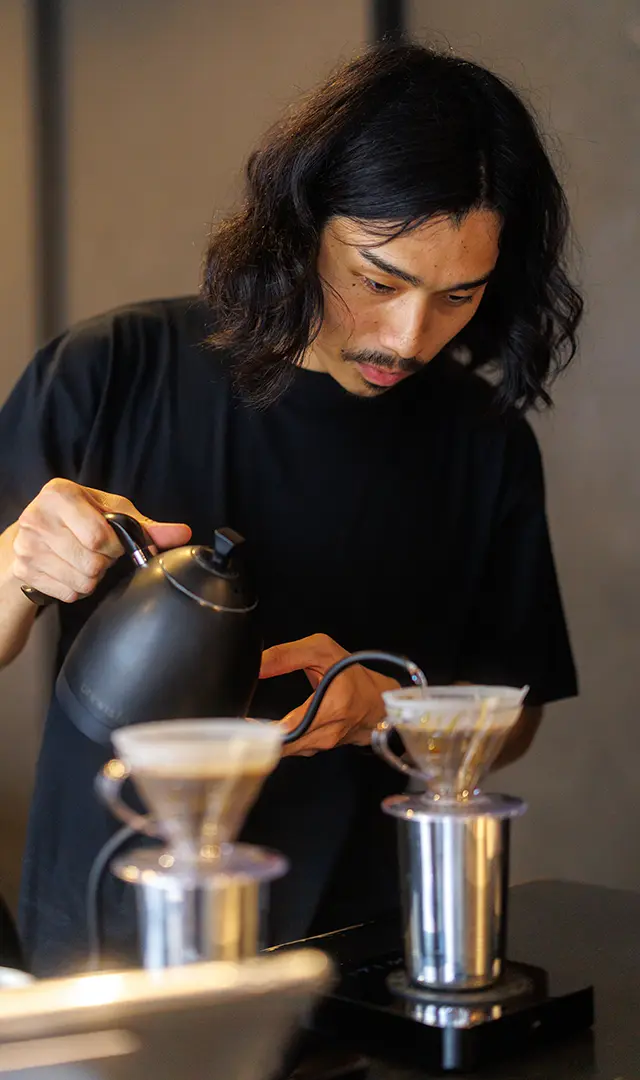
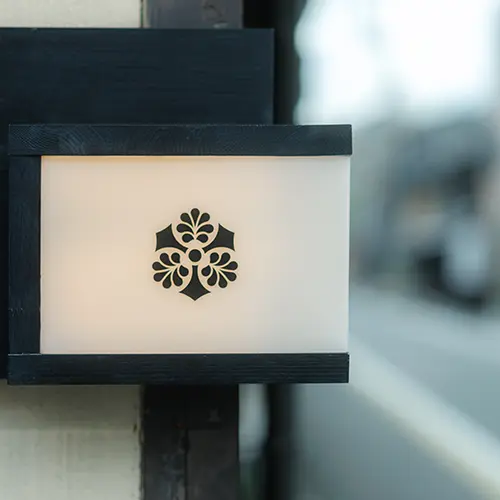
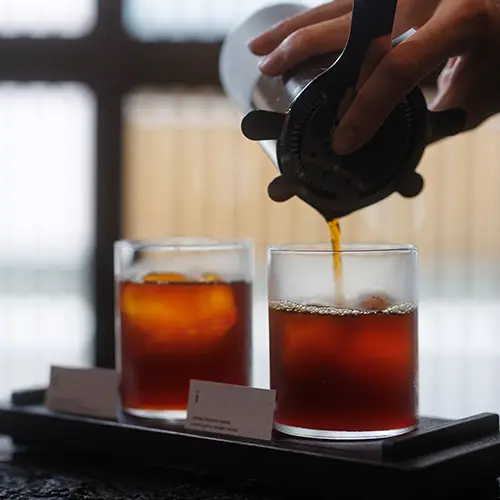
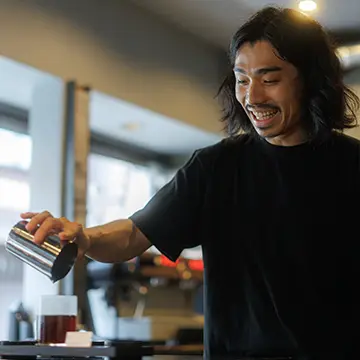
Born in Kyoto. While working as a graphic designer in Tokyo, he built a career as a barista at "GLITCH AND ROASTERS" and "LEAVES COFFEE ROASTERS" in Tokyo for about 7 years, and then became independent in his hometown of Kyoto. The shop, which was renovated from a 100-year-old townhouse, is a stylish space where Mr. Okui, who continues to work as a graphic designer, shines through every corner of the interior, furnishings, and vessels.
https://blend.kyoto/
blend kyoto You can see how to brew delicious coffee introduced by the owner here.
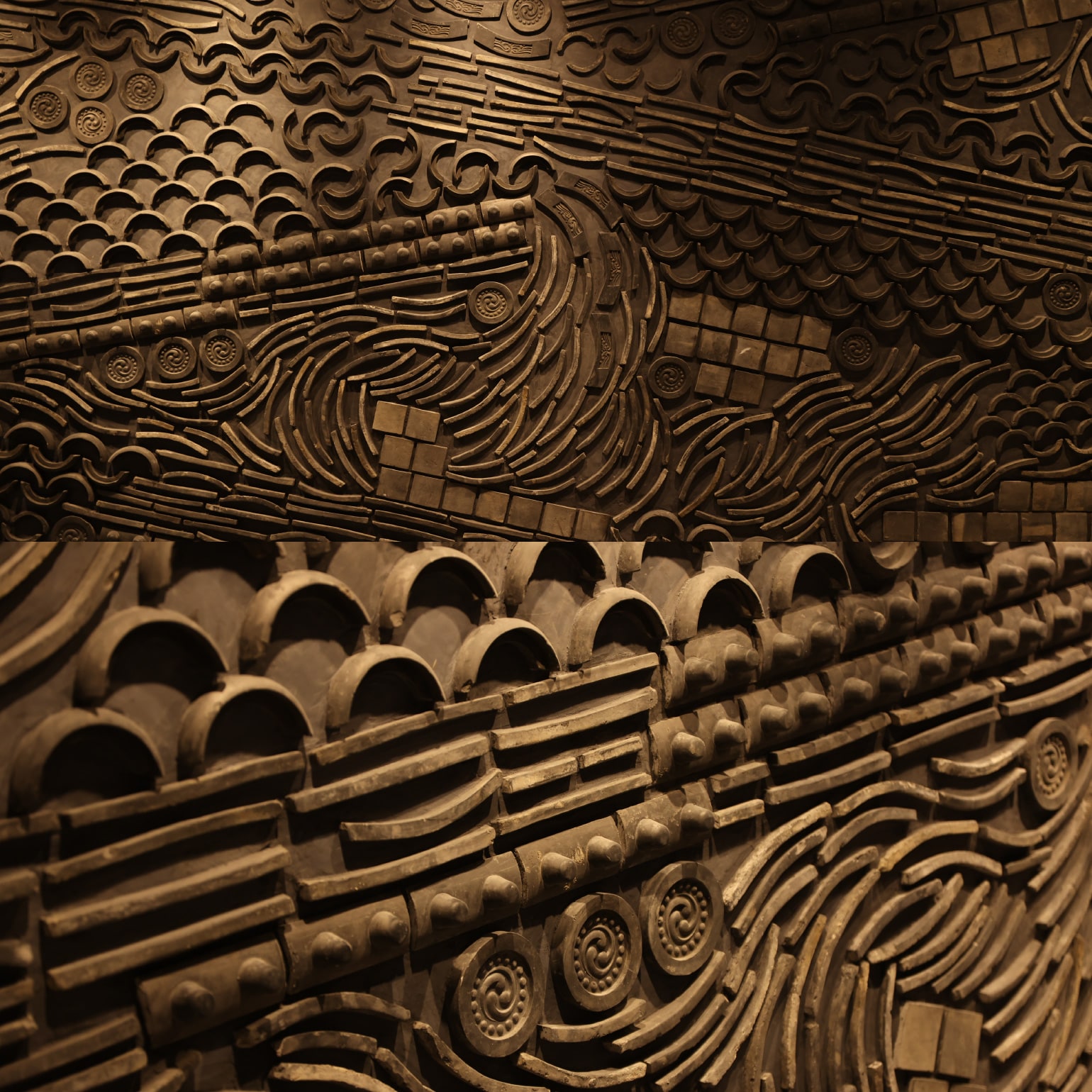
On the wall of the communication space "Aino-machi-no-kura" on the lobby floor of the 1st floor, guests are welcomed by a masterpiece of tile art.
" Aino-machi" is derived from Manomachi-dori on the west side of the hotel, and means the town of "between" between Takakura-dori and Higashi-to-in-dori. It is a street created by one of the Kyoto remodeling projects by Hideyoshi Toyotomi, "Tensho no Jiwari", and its name has a history of 430 years. The tiles that form the motif of the wall of the space that resembles a warehouse were those that slept under the storehouse on the hotel premises. On the board, which is 6528 mm wide and 3000 mm high, the history of this town is revived and brought to life.
"The storehouse here is thought to have been built in the Edo period, and the tiles underneath it may be nearly 300 years old.
Mr. Murakami, who was involved in the production. Nearly 2,000 tiles were carefully processed one by one to become the material for this wall art.
"Many of the parts are made by cutting the edges of the tiles into a 5~6cm thick material and showing the cross-section, and the square plates are made by dividing the flat tile into four equal parts.
The joints that fill the space between the tiles also have a warm texture. Even though the whole thing is black, the soft and rich expression is praised only because of the work of the craftsman.
"The black joints are made of a material containing activated carbon to give it a black plaster-like feel, and there are places where we use about 20 different sizes of trowels to leave unevenness. I paid attention to the details, and I wanted to create a texture that conveys the handiwork of Kyoto craftsmen."
A dragon climbs up in the center, and there are also hidden dragons lurking, a design full of storytelling. If you look at the various details up close and look at it from a distance, the whole picture of this tile art will be approached with depth.
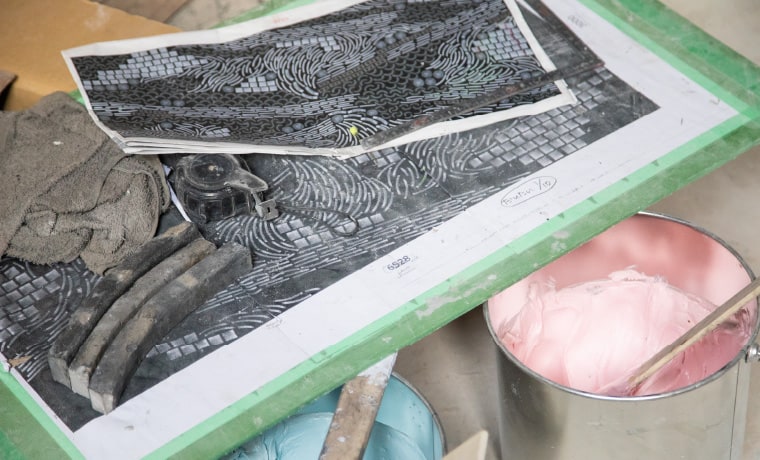
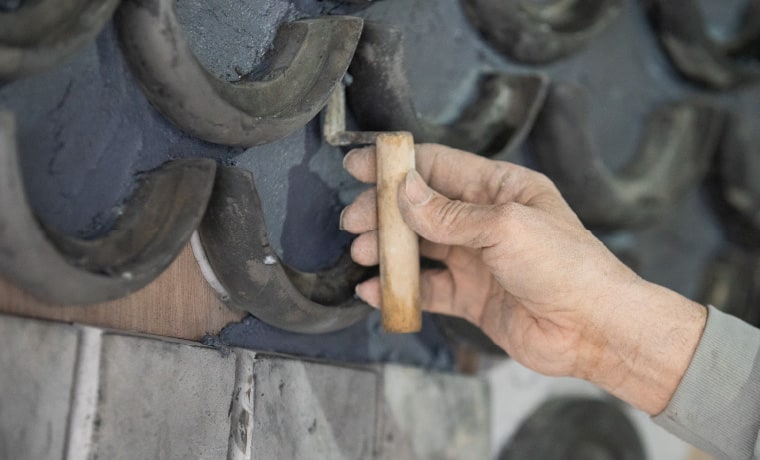
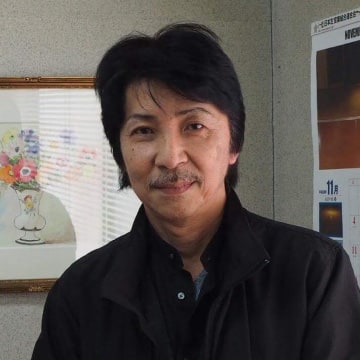
Representative Director Maruhiro Kogyo Co., Ltd. The company was founded in 1925 and is involved in plastering, carpentry, and construction work, as well as product development that makes full use of Kyoto's plastering techniques. The company's ""mud-plaster" panel," one of its "eco-earthen products" that uses a unique recycling system, has been patented. As the third generation owner, Murakami is currently active in proposing new forms of housing suited to the Japanese climate.
"Maruhiro Kogyo Co., Ltd." http://www.maruhiro.jp/


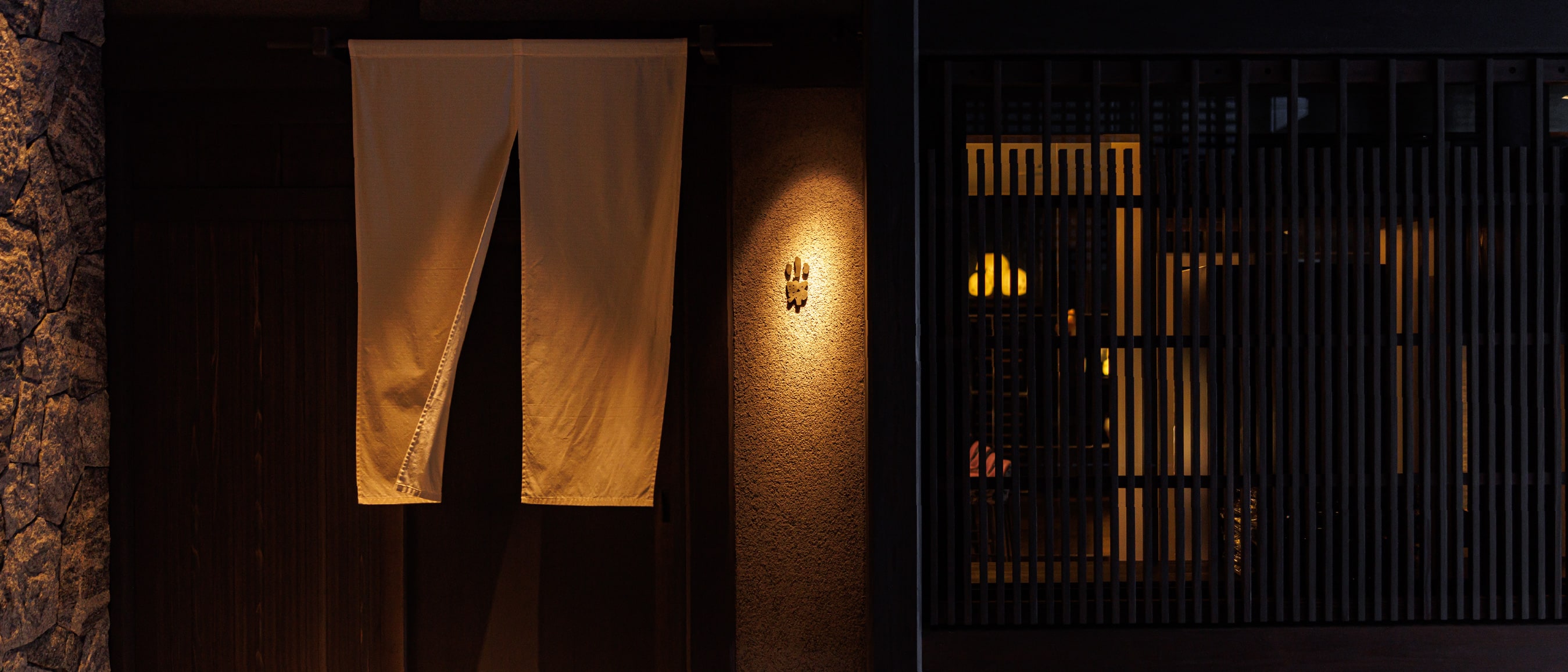
The dining of our hotel is a ONO Group restaurant that handles many famous restaurants such as "ONO-no-Hanare" mainly in Fukuoka City.
"I was fortunate enough to work in Fukuoka and have been working on various restaurants for about 25 years, but I was born in Nara, where I trained at Osaka Kiccho and started my life as a chef. Therefore, Kyoto, which is also in the Kansai region, has been very close to me since I was a child. For that reason, I was fully aware of the high level of food culture in Kyoto, which is praised by the world, and I approached the opening of a restaurant in Kyoto with great nervousness, worrying and thinking through the dishes to be offered. In Fukuoka, we have pursued food in both Japanese and Western genres, so we decided to take on the challenge of 'nouvelle cuisine' as the culmination of our efforts," says Mr. Satoshi Ono, the representative director.
Gathering the best of Japanese and Western styles, the menu full of "mouth fuku" is a gem that can only be enjoyed here. For example, in the dinner menu "Sous vide," fresh fish and carefully selected meats are introduced along with their cooking temperatures, such as "Red Snapper Mi Cui 41 °C," "Abalone 8 hours steamed 90 °C," and "Roasted Japanese black beef sirloin from Miyazaki Prefecture 58 °C." The idea is to enjoy authentic dishes with chopsticks. The rice served in the Hagama cooking style uses rice from Kyoto. Every dessert is devised with ingenuity, and you can enjoy "Nouvelle Cuisine" full of originality.
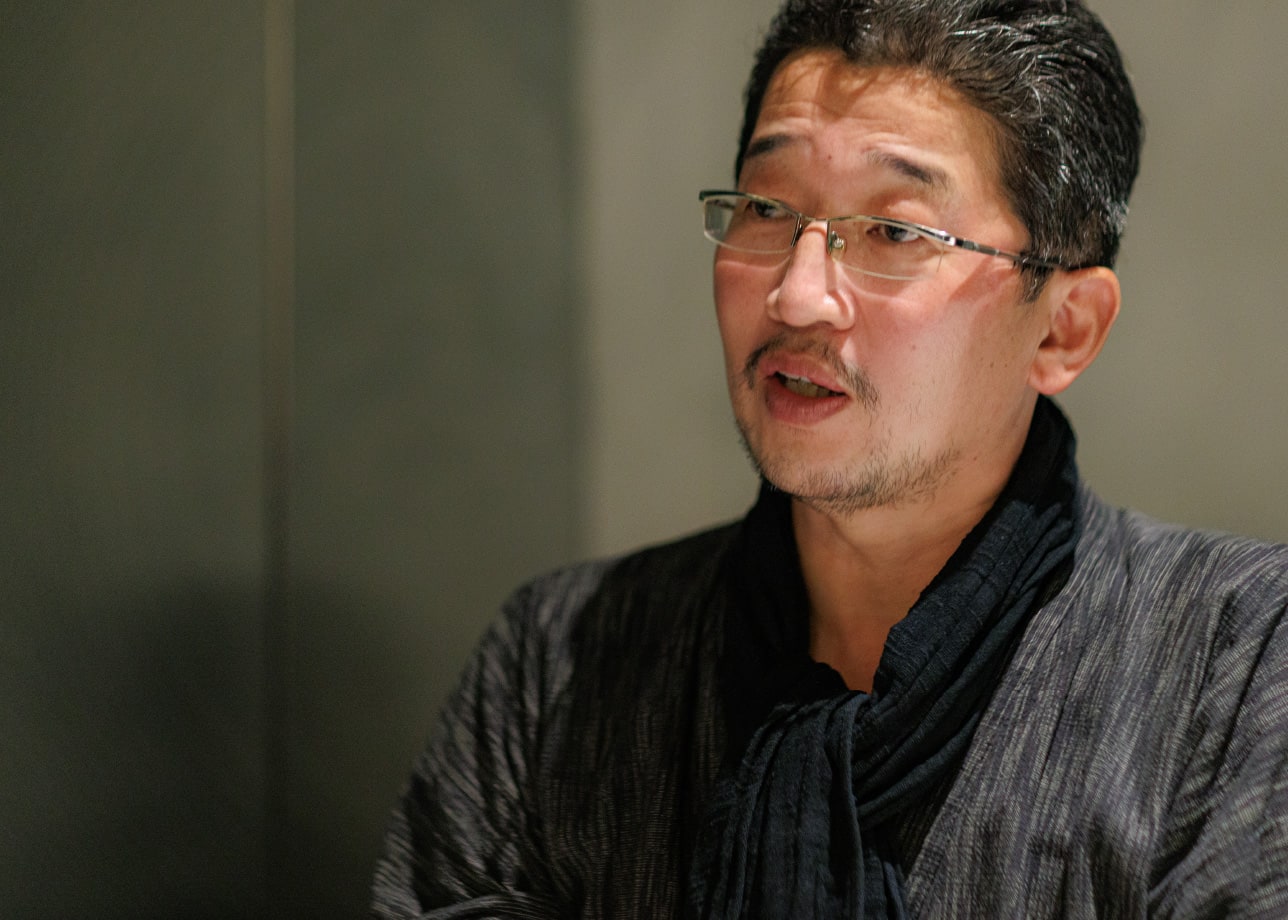
For breakfast, you can choose one of two prix fixe main dishes after being seated, and then choose from the dishes lined up on a large counter, all in a full buffet style.
"I hope to provide a fulfilling start to your day when you arrive at the hotel. I'm an early riser and go to Nagahama Market at 3am every morning when I'm in Fukuoka, but when I stay in Kyoto, I also get up early to attend the morning service at Chion-in Temple. You can enter and leave Chion-in Temple at any time, so for example, you could first go to Chion-in Temple and participate in the service, then go around Yasaka Shrine and Kodai-ji Temple, and then extend your trip to Kiyomizu-dera Temple and Sanjusangendo Temple, which is about an hour's stroll course. I personally highly recommend this, as I think it will be a wonderful time that will cleanse your soul. To support such morning outings, we have prepared a "Light Meal" (a brunch-style snack) that you can enjoy after having a light breakfast first thing in the morning and then returning to the hotel after your stroll. In an open space where we can see our guests' faces, we hope to use our ingenuity and ingenuity to provide a memorable hospitality while accepting our guests' thoughts."
Seeing Kyoto from a new perspective is one of the joys of traveling.
Enjoy fine dining and sightseeing to your heart's content at our flexible hotel.
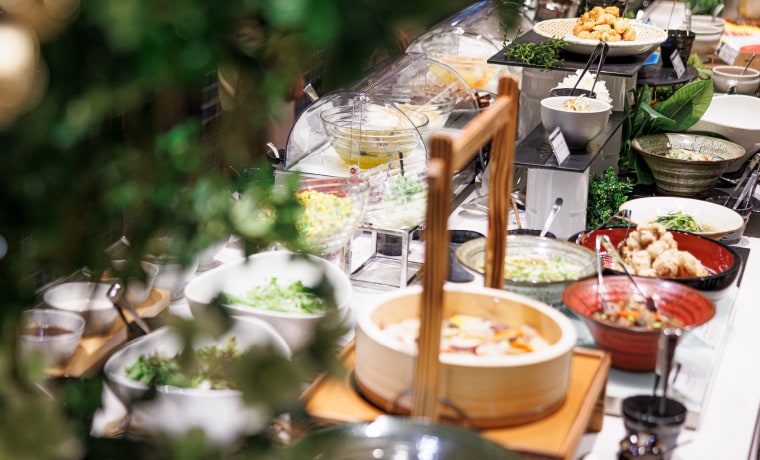
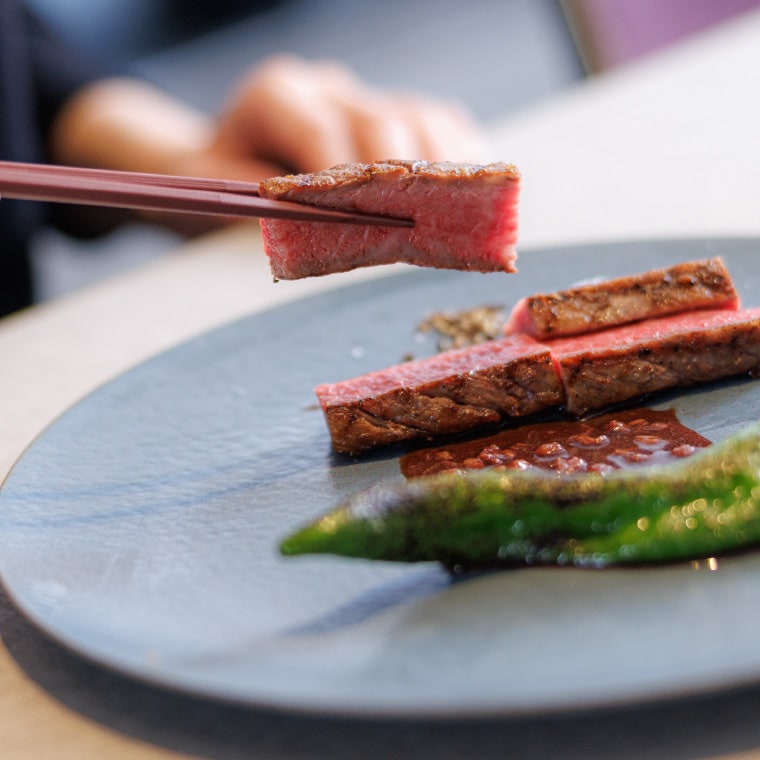
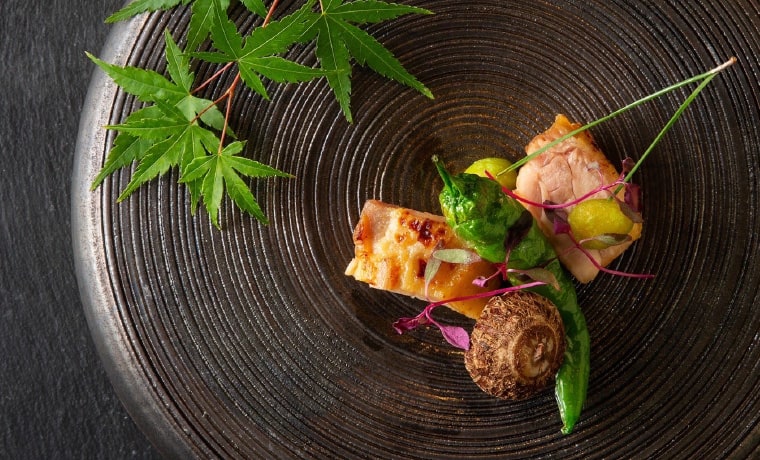
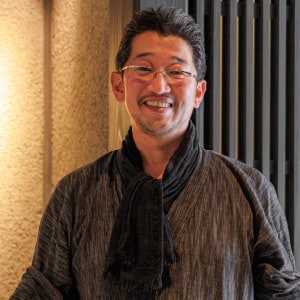
Born in Nara. D.D. Company Ltd.-ONO Group CEO. After graduating from high school, he trained at "Osaka Kiccho" and then went to Fukuoka to participate in the opening of an acquaintance. After working at a number of famous stores such as "Bansai" (Hyatt Regency Fukuoka) and "CHEZ Nobukuni" in Fukuoka, he opened the first ONO GROUP store "DINER'S ONO" in Maizuru, Fukuoka in 1998. Since then, he has opened stores in various genres, from Japanese, Western, and Chinese food to inn management, and has attracted attention as a leader in Fukuoka's restaurant industry.